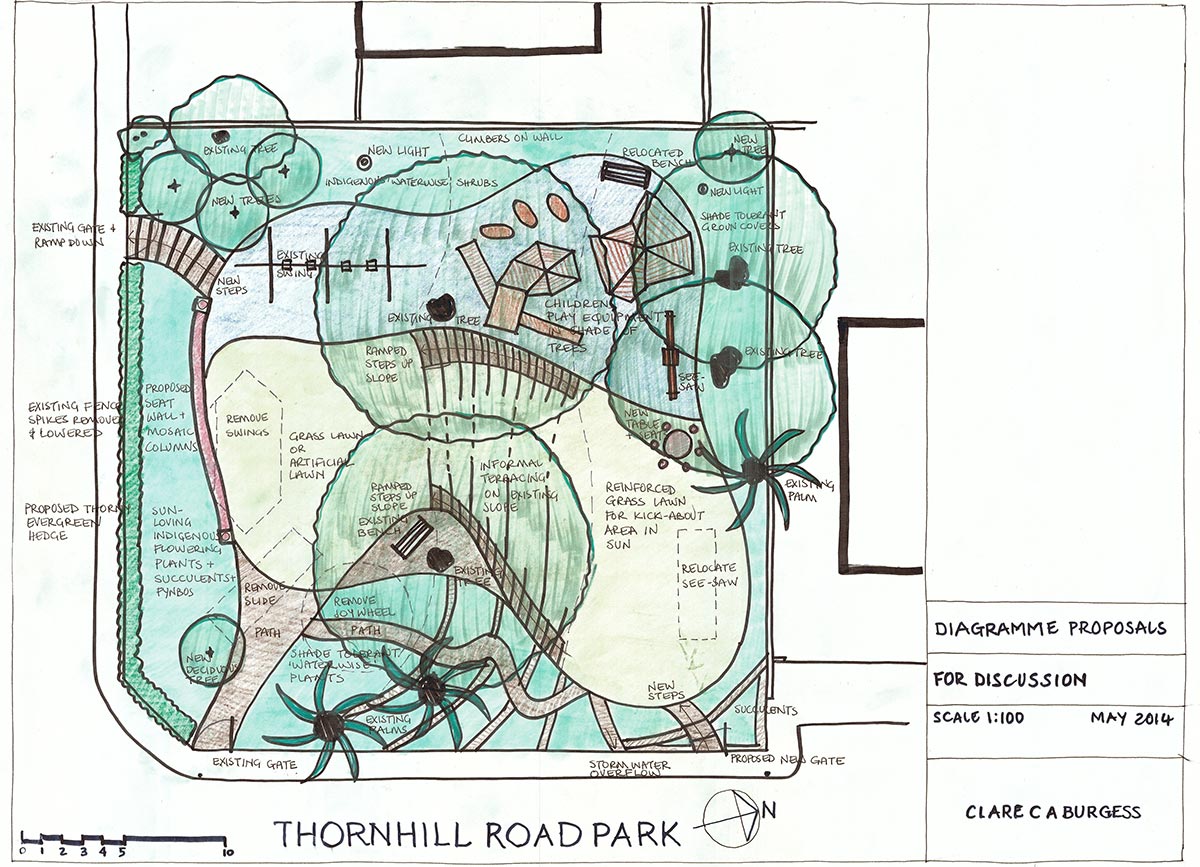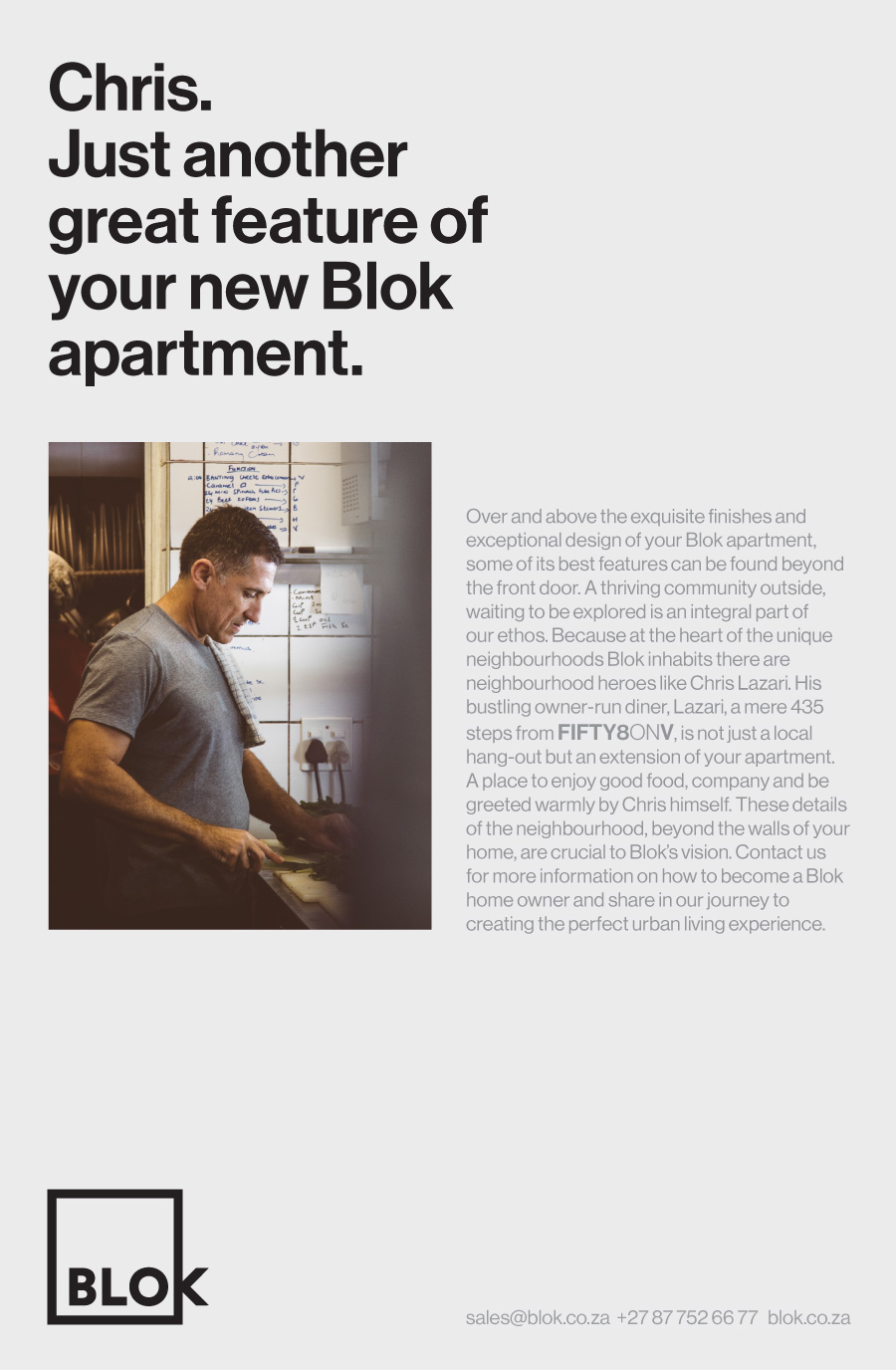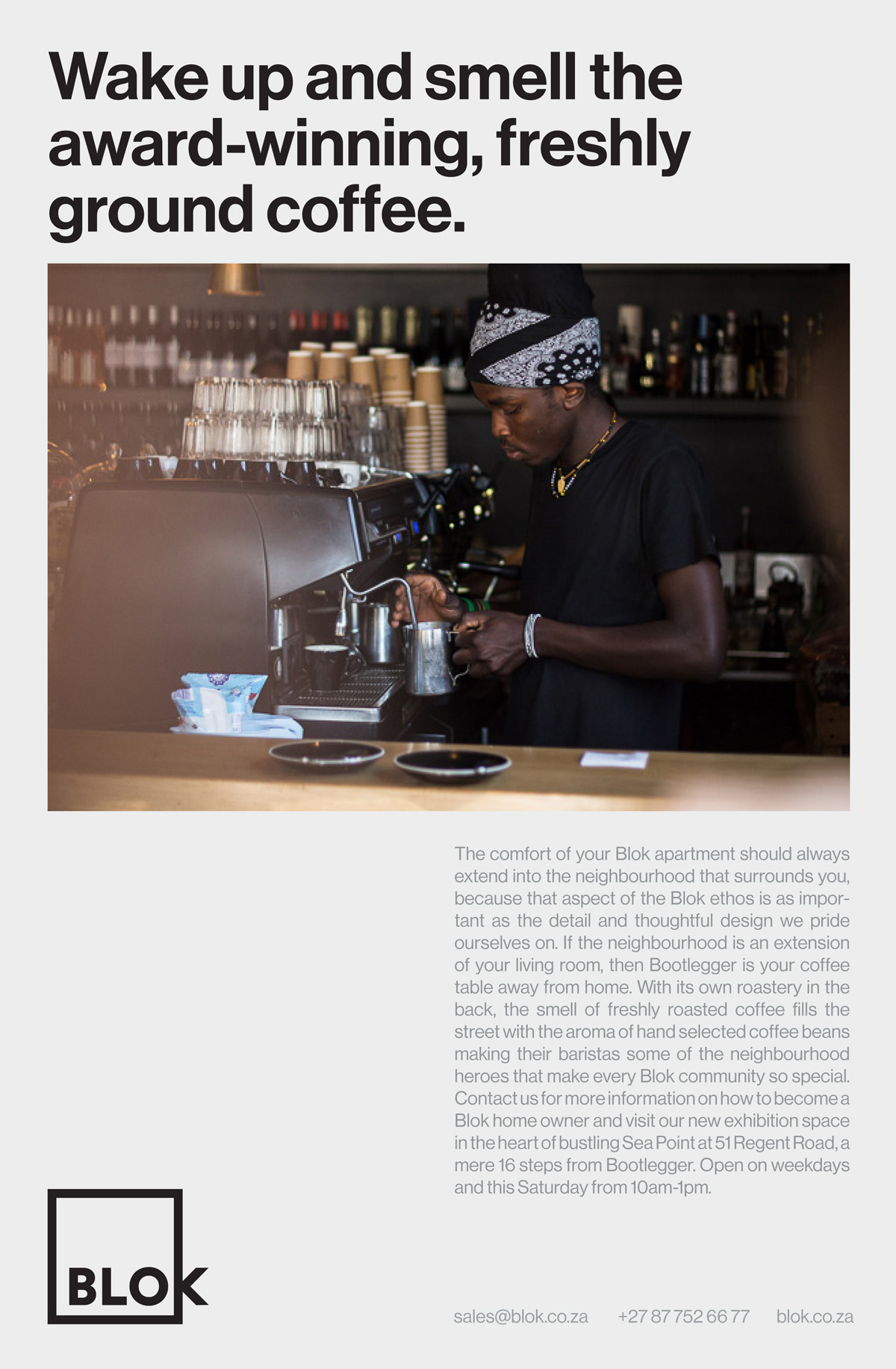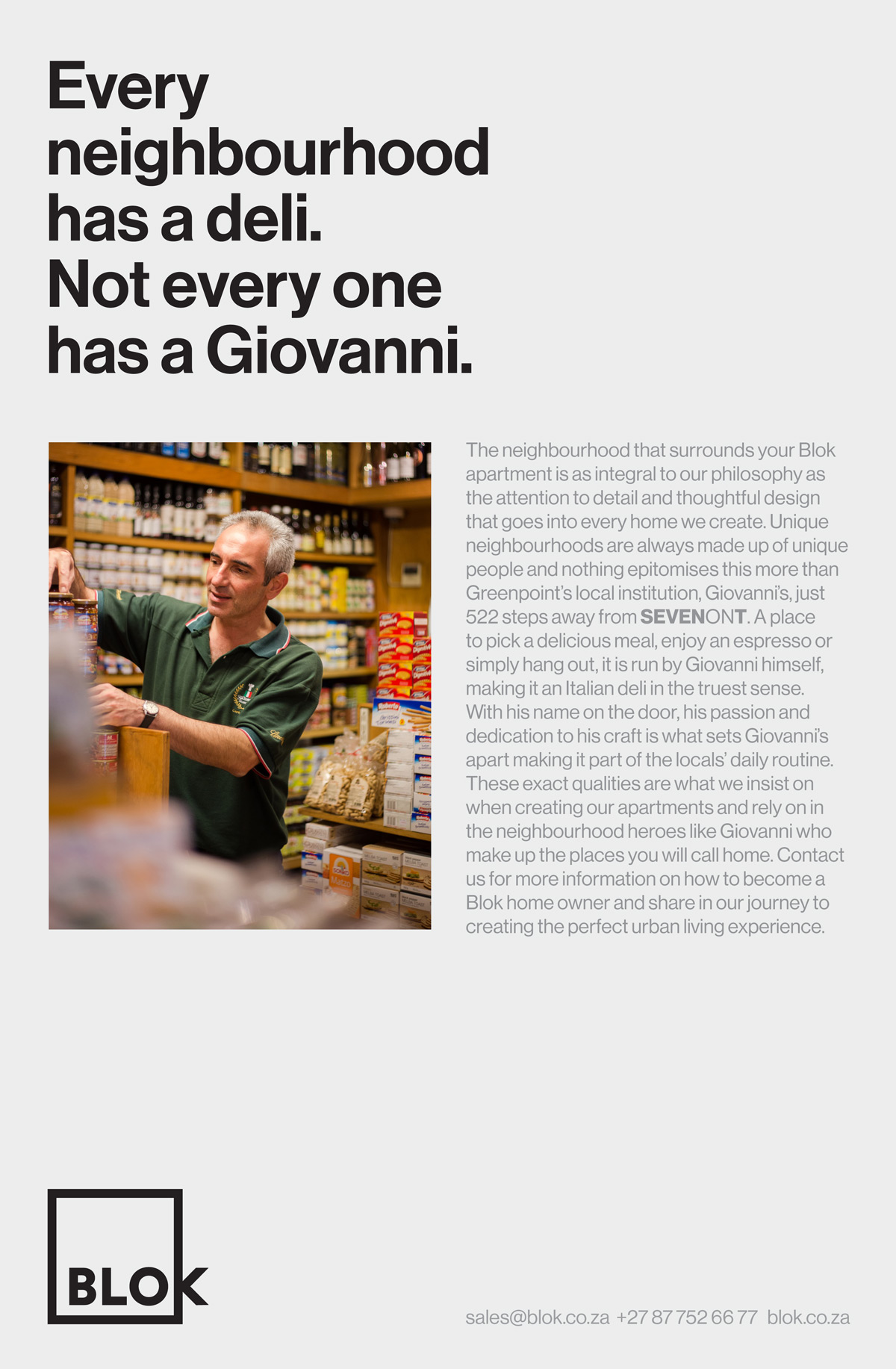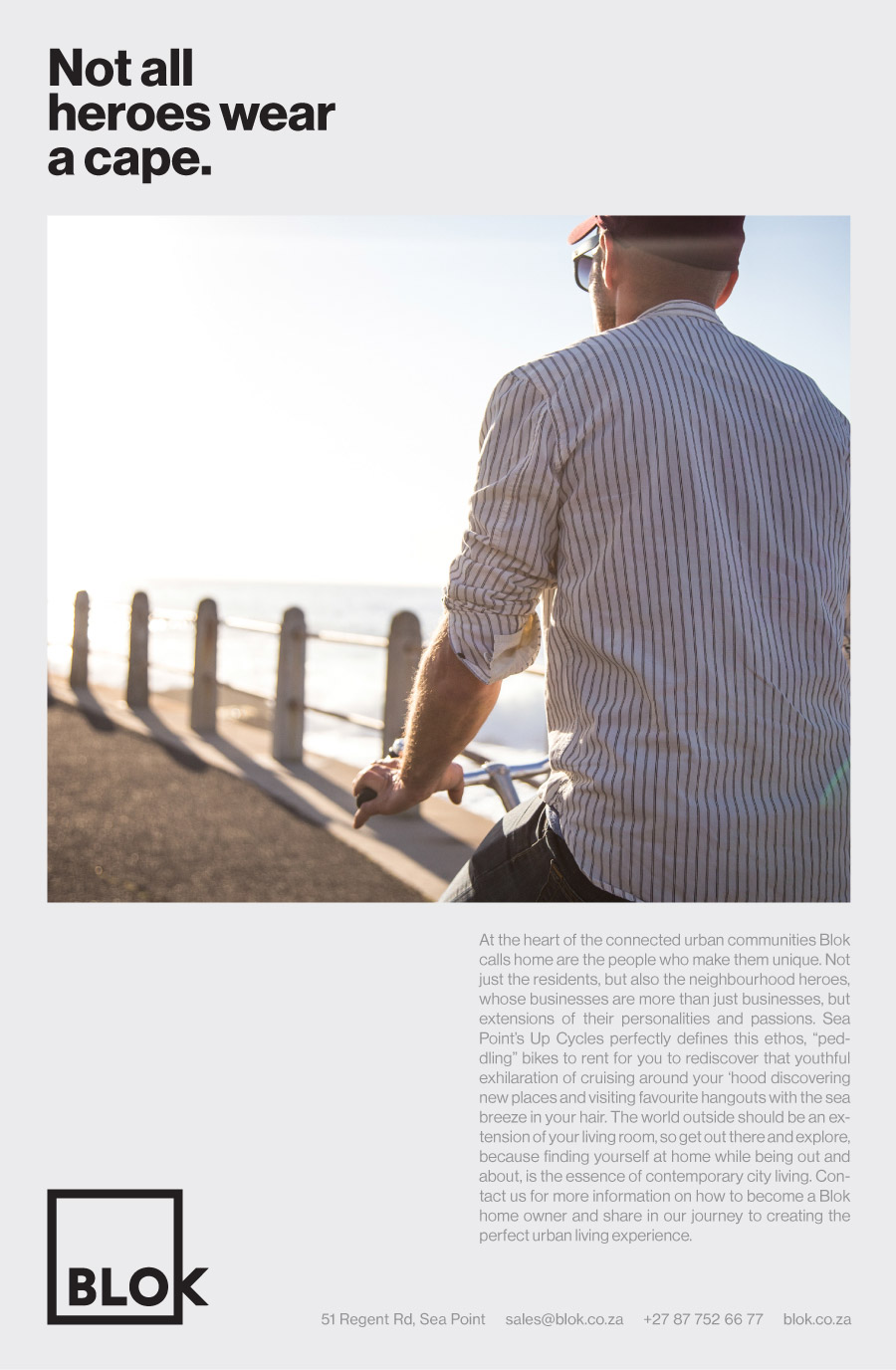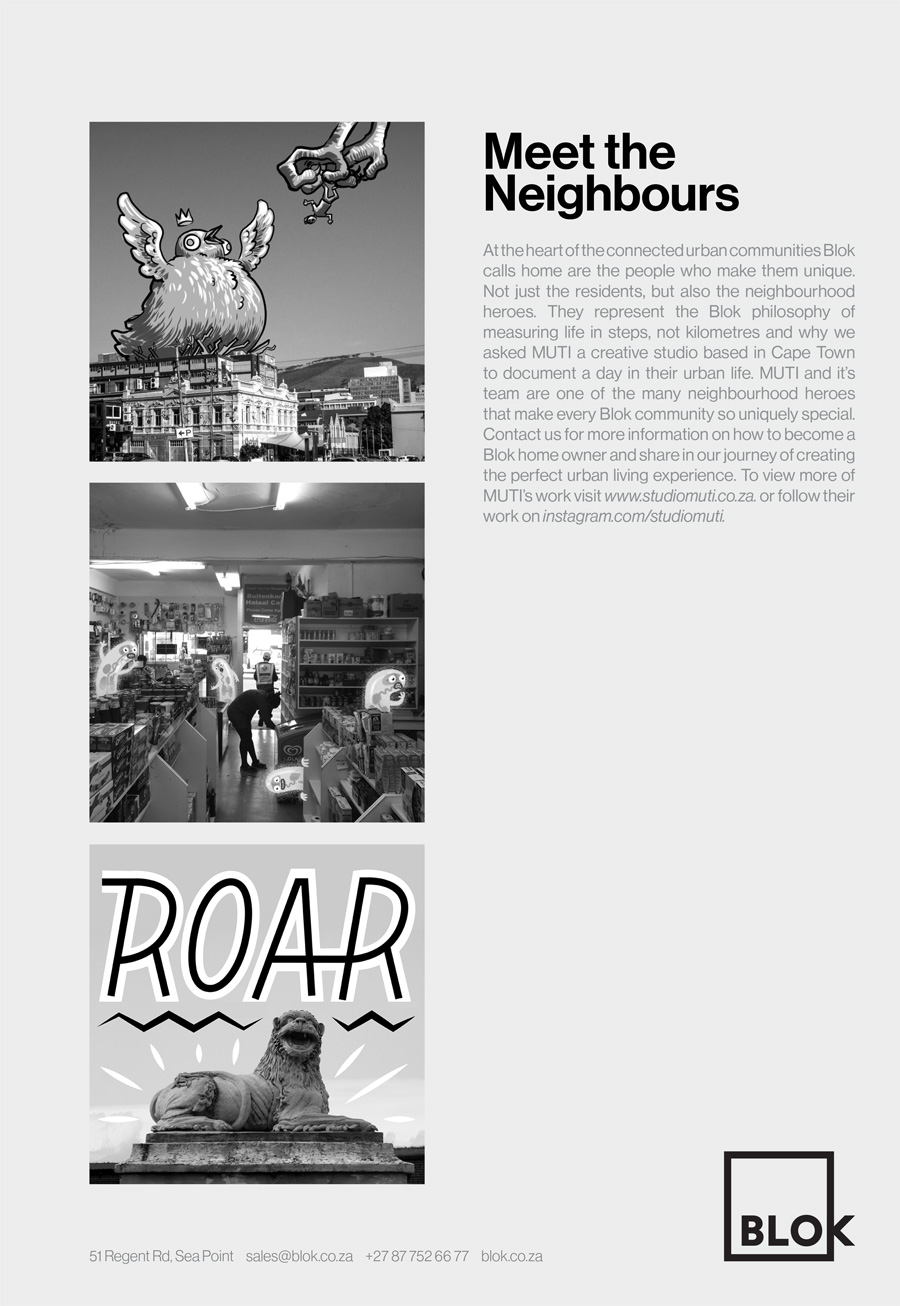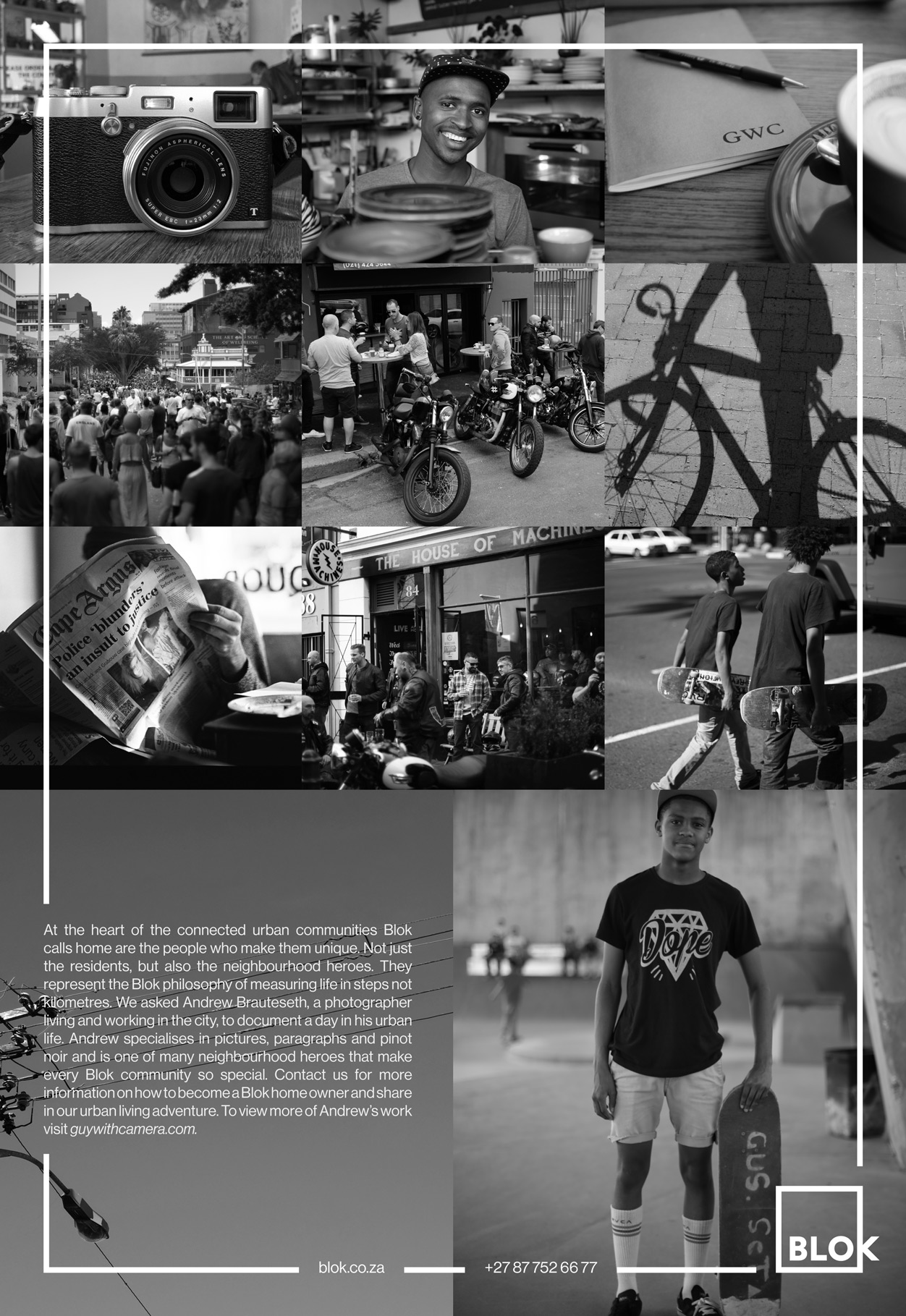Blok recently invited a handful of Sea Pointers to their Regent Road exhibition space to have lunch and talk about the neighborhood: what it means to them, what they love, what their Sea Point secrets are, and what they see in its future.
Pieter supplied the bubbly from his in-laws’ farm, and over a few bottles, with some delicious food provided by Tal, the conversation flowed, new friendships were formed and a host of new ideas for the area dreamed up.
Form & Function
“You can’t curate a city, it happens in different rhythms and on different layers. It’s what makes it so exciting and filled with opportunity and adventure” – Jacques
Rashiq, when discussing one of his favourite things about Sea Point, said “it’s the fact that all of the fundamental businesses are here – the Post Office and butcher are next to a boutique coffee shop, across the road from a hairdresser and nail salon.”
“Sea Point is the first place in South Africa that’s trying to combine the wealthy and the poor in one street”, says Jacques. “This is why you’ll have an internet café on a street right next to a boutique. It’s tough to get that reconciliation right but this incredible stretch seems to manage it. There’s also a beauty in the competitiveness of Sea Point, the pressure is quite unforgiving, but it pushes businesses to achieve more, or they won’t succeed.”
“The pavements in Sea Point also feel generous enough for pedestrian traffic, something that’s really important for a city and often overlooked,” said Lior, “all that is needed is critical mass for people to feel like they can walk the streets comfortably and safely.”
Walking Distance
“For me the best part of working, having my morning coffee and living within 100 steps of each other is that I feel like I’m living in the Truman Show, but in the best way. It’s greeting every second person as you walk the street, and feeling like you belong to a tight-knit community. You just can’t put a price on that.” – Lior
Rashiq’s idea to make Sea Point a better place to live is “to make some pedestrian crossings clearer and the green light for pedestrians longer, and in doing so people will feel safer walking. In New York, you don’t even need to look up when crossing to check for cars, it’s a given that the cars will stop for pedestrians. That security immediately encourages more pedestrian traffic.”
Pieter suggests that a street festival or craft market once a week or month would encourage people to get out and walk the streets of Sea Point. “Closing a busy road like Regent down to cars once a month and getting people out and about walking, socialising, shopping and eating would be a fantastic way to remind people of the enjoyment of experiencing one’s city on foot. Look at how successfully First Thursdays has achieved this for the CDB?”
Jacques continues: “the best part about walking around the city instead of driving is that once you start there is a compounding factor that comes into play. Initially you may only walk until you reach a certain distance, but every 3-6 months that range keeps extending so you walk further each time, until walking from one end of Sea Point to the other doesn’t seem that far. To me, The Point now feels as close to walk to as Bootlegger used to from my apartment in Clarens Road. Plus the massive benefit is how much more of the city and people you see and interact with when doing so.”
On Reminiscing…
Tal’s favourite memory of growing up in Sea Point is, as a girl of about 10 years old, walking the streets of Sea Point with her friends without adult supervision. When her parents and their friends would sit on Main Road at their favourite Middle-Eastern restaurant at night, the men playing “sheshbesh” (backgammon) and the whole street vibe was busy, fun and most of all, safe. “We have a video of those days with the streets jam-packed at night, kids walking around in packs, families walking to dinner or friends, and now as a mom I wish my kids could have that experience. I miss not being able to walk around safely at night, it’s slowly improving in places but there’s work to do to get people feeling safe and out on the streets after dark again.”
Neighborhood Heroes
“My favourite time of the day in Sea Point are 5 minutes before sunrise or 5 minutes after sunset, because you know you’re either about to have your first coffee or your first glass of wine.” – Pieter
Lior: “When Bootlegger opened on the corner of Clarens and Regent, that corner changed and became a well-used and safe corner again. When a business opens in an urban setting and thrives, it encourages others to do the same as they see the risk softened.”
“That’s why I count Kleinsky’s as amongst my favourite Sea Point spots,” commented Shaun, “its traditional Jewish bagel shop with old ladies buying chopped liver and bagels, amazing coffee, incredible music playing in the background, and run by two young guys that are passionate about the area. The more community businesses like these that open and succeed the better. It’s something that Cape Town does extremely well; we’re very good at launching artisanal-type businesses. This encourages entrepreneurial spirit and creativity.”
For Rashiq, his Sea Point hidden gem is also his home address; Main Road in the Oliver Road region with it’s Greek and two Italian restaurants, a Shwarma shop and a Fruit & Veg shop that everyone visits at some point in their Sea Point experience, within walking distance of each other. “It feels like twelve countries represented in one small street.”
Shaun’s other hidden gem, also a few short steps from his home, is none other than Brian’s Pub. The fact that it is a completely down-to-earth ‘dive-bar’ in the middle of Sea Point, and a few short steps from one of the prime strips of land in Cape Town, is a representation of the true Sea Point diversity. Where else in the world would one find this>
Here’s to Sea Point... (glasses clink)
